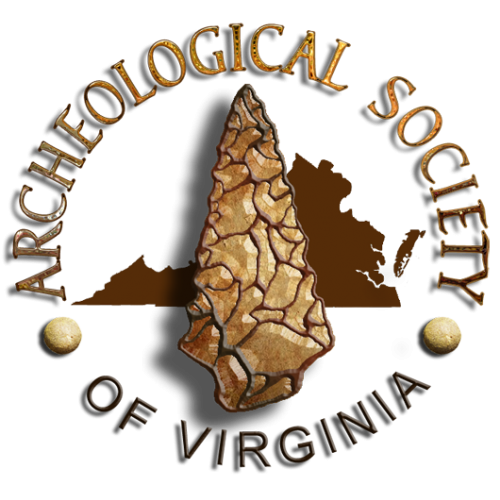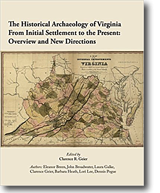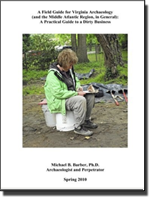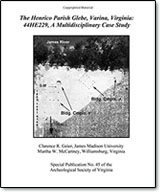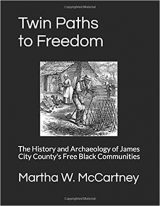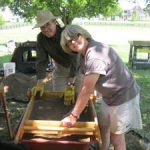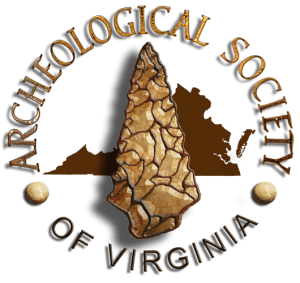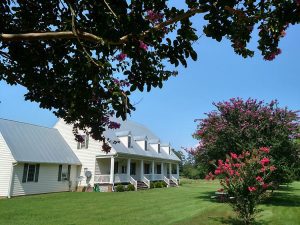The ASV offers five publications sold through Amazon.com
Back Issues of the ASV Newsletters may be found here.
Back Issues of the ASV Newsletters may be found here.
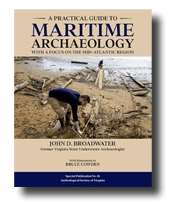
Shipwrecks! Pirates! Sunken Treasure! The public never seems to get enough tales of swashbuckling sailors, their ships, and their adventures at sea. While many sea stories spring from the fertile imagination of fiction writers, many others—often rivaling or exceeding fictional accounts for excitement and adventure—are based on facts. Maritime historians and archaeologists scour archives, shorelines, and submerged lands in search of new details about our maritime past. This book introduces readers to the terminology, tools, and techniques used by maritime archaeologists in their quest for new sites that may add important details to the ever-expanding story of humans and their interaction with the seas, bays, and tributaries that link almost all the people of Earth. While the book focuses on New World sites, more specifically the Mid-Atlantic Region of the United States, much of the information is relevant to maritime research anywhere. The guide is essentially a textbook on maritime and underwater archaeology for nonprofessionals.
The book begins by describing the various terms relating to archaeology underwater, followed by descriptions of some of the most famous and significant shipwreck discoveries; the following chapters describe the types of maritime sites and provide a step-by-step description of how to develop a research plan, investigate an underwater archaeological site, and share research with others through publications, lectures, and social media. Excavation is not covered since that level of site disturbance should only be done by experienced professional archaeologists. Appendices provide suggestions for further reading, lists of agencies and organizations are involved in maritime archaeology, and detailed instruction and forms for conducting underwater research. The book is written in a conversational style, and the information is detailed, but easy to follow and understand.
The author, John Broadwater, has been conducting maritime archaeology projects for more than fifty years, much of it in the murky waters of the Mid-Atlantic where special methodologies are required to cope with the near-zero visibility. John was Virginia’s first State Underwater Archaeologist, directing a ten-year shipwreck project in the York River. John began diving in 1969 but had no knowledge of archaeological principles or techniques. He was fortunate to be offered opportunities to work with professional maritime archaeologists, but he still values his connections to recreational divers and avocational archaeologists, so he has devoted a great deal of time and effort providing opportunities for those groups to learn about and participate in his research. He was a founder of the Archeological Society of Virginia’s Maritime Heritage Chapter. This book is Broadwater’s most recent effort to promote educational training and opportunities for divers and avocational archaeologists.
Edited by Clarence R. Geier. Chapters cover Virginia history from initial settlement through the 20th century, plus one which deals with the important role of underwater archaeology. Written by prominent archaeologists with research experience in their respective topic areas, the chapters consider important issues of Virginia history and consider how the discipline of historic archaeology has addressed – and needs to address — them. Changes in research strategy over time are discussed, and recommendations are made concerning the need to recognize the diverse and often differing roles and impacts that characterized the different regions of Virginia over the course of its historic past. Significant issues in Virginia history needing greater study are identified.
Michael B. Barber provides guidelines and instructions on conducting archaeological fieldwork. Written with humor, the author tells you not only how to do the work of archaeology but also why the work needs to be done a certain way. Includes forms that can be reproduced for your own use and a list of recommended readings.
By Clarence R. Geier and Martha W. McCartney. This book introduces the reader to the historical and archaeological evidence of a significant Colonial Period habitation on the James River believed to have been seriously impacted by 17th and 18th century floods and hurricanes. The interpretation of the Henrico Glebe Site, located within Henrico Parish Glebe lands at Varina, opens the door to a discussion of the role of the Church of England in the Virginia Colony and the types of housing parish leaders were obliged to provide to the clergy. Included is a rigorous discussion of Virginia legislation and parish records, as well as a physical description of the diverse residences and service buildings based on archeological findings. Paperback.
Edited by Elizabeth A. Moore and Bernard K. Means. This volume focuses on Virginia’s pre-European Contact past. It opens with a discussion of Virginia’s physiographic regions by Christopher Egghart, whose dedication to the Commonwealth’s past led him to author over a third of the chapters in this book. In Chapter 2, Egghart discusses the rivers and resources that divide and shape the lands that American Indians traveled across, exploited, and settled and sets the state for a chronological presentation of Virginia’s pre-European Contact American Indian past. Chapter 3, by Dr. Clifford Boyd, emphasizes the Paleoindian period, but also more thoroughly explores the pre-Paleoindian period in a way not possible previously. Dr. Michael Barber then considers, in Chapter 4, the Early Archaic period, which sees major transformations in climate, as the last major Ice Age ended, and Ice Age megafauna that fascinated Thomas Jefferson became extinct. The remainder of the Archaic period and the beginnings of the ceramic era, e.g. the Early Woodland, are considered by Egghart in Chapters 5 to 7. In addition to the introduction of ceramic technology, this span sees an environment that becomes more modern in its character and human settlements increased in size and duration. Dr. Carole Nash then considers the ambiguity that has long characterized the Middle Woodland period in Virginia, as is the case elsewhere in the Middle Atlantic region. This ambiguity vanishes to some degree during the Late Woodland period, which, because of a richer archaeological and ethnohistoric record, is considered in the remaining three chapters in this volume. Dr. Keith Egloff focuses on the Late Woodland cultures of southern Virginia, Drs. Christopher Shephard and Martin Gallivan look at eastern Virginia, and Drs. Bernard K. Means and Elizabeth Moore examine northern Virginia. Much more is known about the Late Woodland of eastern Virginia than the rest of the state, largely because it is here that American Indians and Europeans had the first and most sustained contact before native societies were disrupted—but not eradicated or vanquished as some have argued. In fact, by a happy coincidence, this volume comes out just a year after six American Indian tribes in Virginia received federal recognition: “…the Chickahominy, the Eastern Chickahominy, the Upper Mattaponi, the Rappahannock, the Monacan and the Nansemond tribes” (Portnoy 2018). Their recognition is just two years after the first Virginia tribe, the Pamunkey Indians, themselves were so recognized (National Park Service 2015). These are long overdue but ironic recognitions, given that the ancestors of these American Indian tribes lived in Virginia long before the first European even was aware of the rich tapestry of cultures that called Virginia their home. This volume helps tell the story of these American Indians, but is itself incomplete. Hopefully, future iterations of the story of Virginia’s past will include the voices of the American Indians themselves.
By Martha McCartney. During the first half of the nineteenth century, there were two Free Black settlements in James City County, Virginia: one that was purposefully established, and another whose formation was happenstance. These two communities’ origins and their inhabitants’ personal histories provide unique insights into the life experience of Virginia’s Free Blacks. Among the issues discussed are household composition, employment, living conditions, material culture, family stability, and social mobility. A succinct overview of the laws that governed Africans’ and African Americans’ everyday lives serves as a backdrop for the main narrative. The research of social historians, archaeologists, architectural historians, and experts in the field of material culture is used to recreate the world in which nineteenth century Free Blacks lived.
ARCHEOLOGY RESOURCES AND ARTICLES
Virginia Archeology
Council of Virginia Archaeologists
COVA is dedicated to the preservation and study of Virginia’s archaeological resources, fostering public awareness, knowledge, and support for the preservation of Virginia archaeology, and acts as an independent professional advisory group for the Virginia Department of Historic Resources.
Virginia Department of Historic Resources
The VDHR maintains information on the Commonwealth’s historic architecture and archeological sites. It’s mission is to foster, encourage, and support the stewardship of Virginia’s significant historic, architectural, archeological, and cultural resources.
Guidelines for Conducting Historic Resources Survey in Virginia.
These non-regulatory guidelines are implemented and distributed by the Virginia Department of Historic Resources.
Passport In Time
Passport in Time (PIT) is a volunteer archaeology and historic preservation program of the USDA Forest Service (FS). PIT volunteers work with professional FS archaeologists and historians on national forests throughout the U.S. on such diverse activities as archaeological survey and excavation, rock art restoration, archival research, historic structure restoration, oral history gathering, and analysis and curation of artifacts. New PIT volunteers receive a “Passport” and each time a volunteer visits a project, the project leader stamps the volunteer’s passport and documents their hours from projects all over the country!
The Virginia Canals & Navigations Society
VCNS preserves and enhances Virginia’s rich inland waterways heritage in all its fascinating aspects, including history, exploration, archeology, modeling, local lore and legend, restoration, preservation, park and trail development.
Virginia’s Indians Past & Present
This website offers historical information, lesson plans, bibliographies, and links to tribal home pages. The site includes sections on the Powhatan Indians as well as on topics of early colonial history such as Jamestown and Sir Walter Raleigh’s expeditions. Much of the information is provided for younger readers, who may be researching class projects. The site is fully searchable and contains an index and sitemap.
Virginia Museum of Natural History
This website offers information on current research, lab activities, volunteer opportunities and information with a focus on studies of Invertebrate Paleontology, Vertebrate Paleontology, Recent Invertebrates, Archaeology, Mammalogy, Marine Science and Geology.
Guide to Virginia’s Historical Resources
This website offers historical information on a variety of sites and locations that contain information about Virginia’s past, including library and archival sites, as well as sites for kids and families.
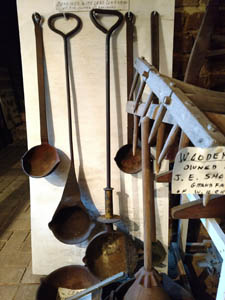
DONATE TO THE
ARCHEOLOGICAL SOCIETY OF VIRGINIA

DONATE TO THE
ARCHEOLOGICAL SOCIETY OF VIRGINIA
FINANCIAL DONATIONS MAY BY SENT BY MAIL TO:
Lisa Jordan
ASV Treasurer
901 West High Street
South Hill, VA 23970
Telephone:
(804) 829-2272
New World Archeology
Society for Historical Archaeology
Provides written papers on all aspects of historical archaeology via a newsletter and a journal series—the premier North American historical archaeology publication series.
Society for American Archaeology
Provides written papers on all aspects of prehistorical archaeology via a newsletter and a journal series—the premier North American prehistorical archaeology publication series.
Journal of Field Archaeology
JFA publishes a quarterly journal devoted to field archaeology. JFA is a mix of theoretical and practical application for field and analytical studies in archaeology.
African-American Archaeology, History, and Cultures
This site provides detailed lists of resources related to African American archaeology, cultures, and history, divided into topical and regional sections, including the Mid-Atlantic region and Virginia sites.
National Register of Historic Places
The National Register of Historic Places is the nation’s official list of cultural resources worthy of preservation. The National Register is administered by the National Park Service, which is part of the U.S. Department of the Interior, and part of a national program to coordinate and support public and private efforts to identify, evaluate, and protect our historic and archaeological resources. Properties listed on the National Register include districts, sites, buildings, structures, and objects that are significant in American history, architecture, archaeology, engineering, and culture. The National Register
The Maryland Historical Trust was formed to assist the people of Maryland in identifying, studying, evaluating, preserving, protecting, and interpreting the state’s significant prehistoric and historic districts, sites, structures, cultural landscapes, heritage areas, cultural objects, and artifacts, as well as less tangible human and community traditions.
Diagnostic Artifacts in Maryland
The Maryland Archaeological Conservation Laboratory’s Diagnostic Artifacts in Maryland web site has been created to provide an introduction to some of the most significant types of artifacts recovered from archaeological sites in Maryland. Their goal is to assist the professional archaeologist, and anyone else with an interest in Maryland archaeology, to recognize the objects typically found here, and to become familiar with the descriptive terms commonly used in this area. But many of these artifacts have a far broader geographical range than just Maryland, so we hope the web site will be of use to a wide audience.
The Archeological Society of Delaware
The Archeological Society of Delaware (ASD), founded in 1933, is a statewide organization of avocational and professional archeologists devoted to the study and conservation of Delaware archeology.
The Archeological Society of Maryland, Inc.
The Archeological Society of Maryland, Inc. (ASM) is a statewide organization of lay and professional archeologists devoted to the study and conservation of Maryland archeology.
North Carolina Office of State Archaeology
This is the state’s oldest nonprofit organization devoted to the preservation and study of the state’s archaeological past.
West Virginia Archeological Society
WVAS publishes West Virginia Archeologists twice a year, has an annual meeting, records sites, assists in fieldwork and has a mission of site protection and dissemination of archaeological information.
West Virginia Division of Culture And History
West Virginia’s State Historic Preservation Office with the mission to encourage, inform, support, and participate in the efforts of the people of West Virginia to identify, recognize, preserve and protect West Virginia’s prehistoric and historic structures, objects and sites.
Grave Creek Mound Archaeological Complex
Museum for the Adena period Grave Creek Mound complex. The Grave Creek Mound is the largest Adena mound.
Council for West Virginia Archaeology
Composed of professional archaeologists working in West Virginia or with research interests here. Nearly all are associated with government agencies or the consulting firms that do much of the actual exploration and excavation required by Federal law.
Council for Northeast Historical Archaeology
CNEHA is dedicated to archaeological scholarship of the historic period in the American Northeast and extends as far south as Virginia.
Middle Atlantic Archaeological Conference
MAAC meets annually, in early spring, for three days of papers, discussion groups, special workshops, a business meeting, and, of course, a party to catch up on what all our colleagues have been doing for the past year!
Southeastern Archaeological Conference
The Southeastern Archaeological Conference (SEAC) was founded in response to the tremendous increase in federally funded archaeological work in the Southeast during the 1930s. SEAC was created to allow excavators to quickly share new data with each other and to standardize ceramic types.
National Preservation Institute
The National Preservation Institute (NPI) is a nonprofit organization offering specialized information, continuing education, and professional training for the management, development, and preservation of historic, cultural, and environmental resources.
National Archeological Database: National Park Service’s Links to the Past
The National Archeological Database (NADB)—a computerized communications network for the archeological and historic preservation community—is an internationally recognized source of information on public archeology. NADB was established to meet a congressional directive to improve access to information on archeological activities nationwide.
World Archeology
Archaeometry
Archaeometry is an international journal covering the involvement of the physical and biological sciences with archeology and art history. The topics covered include dating methods, artifact studies, mathematical methods, remote sensing techniques, conservation science, and the study of man and his environment.
The Society for Archaeological Sciences
The Society for Archaeological Sciences (SAS) was founded to establish a forum for communication among scholars applying methods from the physical sciences to archaeology and to aid the broader archaeological community in assessing the potentials and problems of those methods. The SAS promotes such communication through its distribution of the SAS Bulletin; Advances in Archaeological and Museum Science series; and SASnet, an electronic forum on the Internet.
The Historical Metallurgy Society
The Historical Metallurgy Society (HMS) was founded to establish a forum for communication among scholars interested in the use of metals in the past. The HMS promotes such communication via its electronic forum on the Internet and via a newsletter.
The Association for Industrial Archaeology
The Association for Industrial Archaeology (AIA) was founded to establish a forum for communication among scholars interested in the archaeology of industry, primarily in the UK and Northern Europe.
Society for Industrial Archeology
SIA has a worldwide membership of over 1,800 individuals who have a strong interest in preserving, interpreting, and documenting our industrial past and heritage. Whatever your profession or favorite pursuit, if you share our interest in the industrial past, we welcome you to join us.
ArchNet Virtual Library
ArchNet serves as the World Wide Web’s virtual library for archeology. This server provides access to archeological resources available on the Internet. Information is categorized by geographic region and subject.
Internet Archaeology
Internet Archaeology is the first fully refereed e-journal for archaeology.
Archeological Publications, Journals, Magazines, and Book-search Services
Discover Archaeology
This site contains links to many archaeological websites and publications, including Archaeology magazine, Discover, Biblical Archaeology Review, Archaeology Odyssey Magazine, and Kids Discover, among others.
Siftings
Siftings is an eclectic mixture of news, announcements, and documents from participating organizations. Resources include membership forms, calls for papers, preliminary conference programs, back issues of publications, copyright releases, links, and more.
